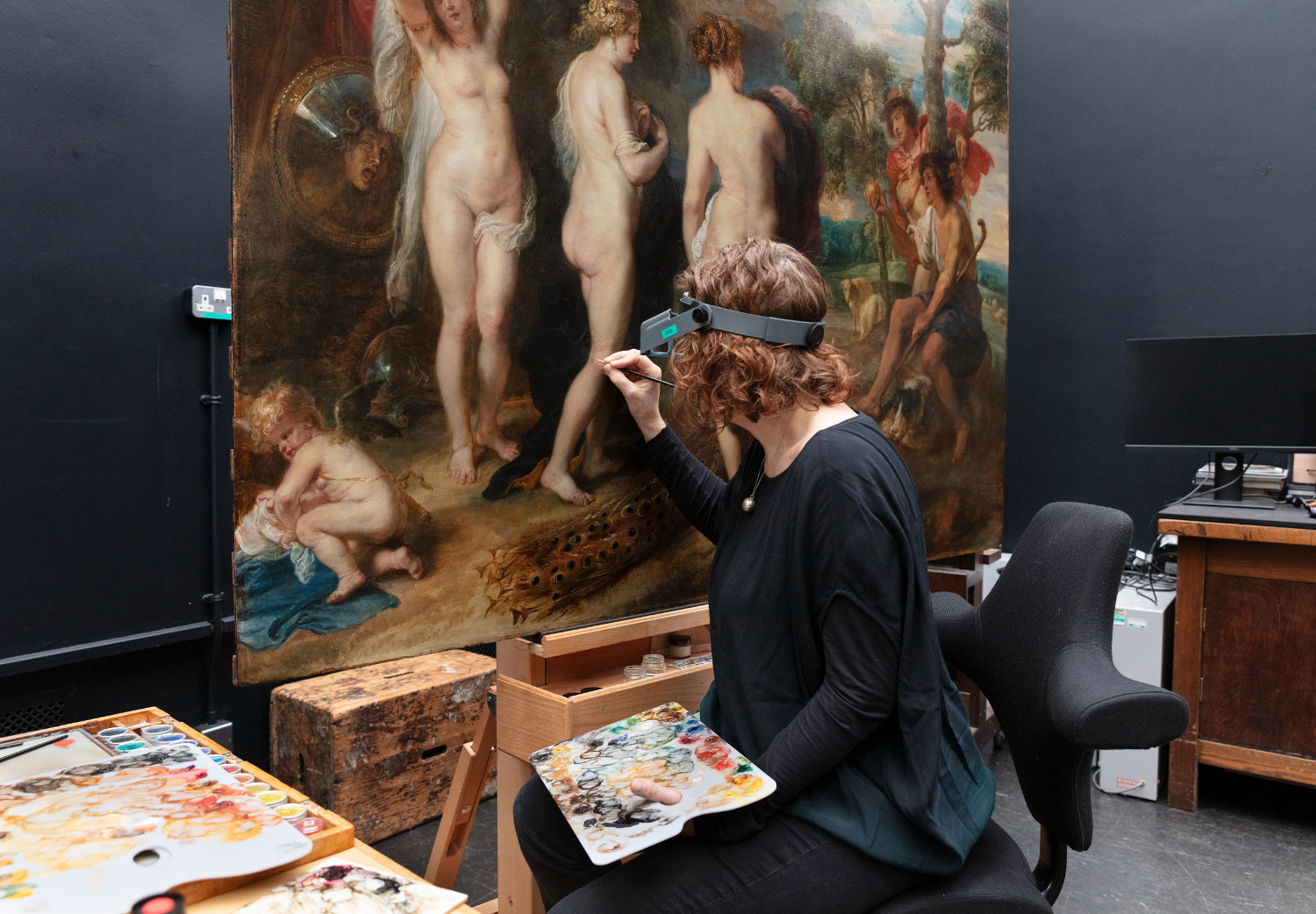If you know classical history and love art that pays homage to the period, then this news is sure to get you excited.
Following a meticulous 14-month restoration undertaken by the Gallery’s Conservation Department and supported by the Bank of America Art Conservation Project, Peter Paul Rubens’s The Judgement of Paris (probably 1632-5) is now back on public display as of this June.
This masterpiece’s restoration coincides with the National Gallery’s Bicentenary celebrations. On 10 May 2024, the National Gallery celebrated its 200th anniversary, marking the beginning of a year-long festival of art, creativity, and imagination. In preparation for the first comprehensive redisplay of the collection in 30 years, aptly titled ‘The Main Event,’ the Gallery aimed to conserve some of its greatest masterpieces, including Rubens’s iconic work.
Rubens’s The Judgement of Paris is among the most significant works within his oeuvre and holds a place of paramount importance in the National Gallery Collection. Created during the last decade of his life, the painting captures the fateful moment when Paris chooses between the goddesses Venus, Minerva, and Juno. This subject was one Rubens revisited multiple times, but this particular rendition stands as one of his most recognisable and significant endeavours.
The conservation of The Judgement of Paris exemplifies the Gallery’s commitment to preserving and enhancing its valuable pieces through meticulous scientific and art-historical research. Sophisticated techniques like infrared reflectance imaging spectroscopy (RIS) and X-ray fluorescence (XRF) were utilised in the analysis of the painting. These non-invasive methods revealed that the artwork had undergone several restorations post-Rubens’s death in 1640, including a significant re-working between 1676 and 1721 by a French artist likely associated with the Duc de Richelieu or the Duc d’Orléans. The French interventions aimed to moderate the erotic nature of the scene while maintaining the nude depiction of the three goddesses.
The painting’s journey to Britain in 1792 and its eventual acquisition by the National Gallery in 1844 form part of its rich history. Detailed analyses unveiled the layers of alterations—distinguishing Rubens’s original changes from those added by later artists. For instance, Rubens initially used smalt for the sky, which fades to grey over time, and the pricier ultramarine for Venus’s cloak. Rubens continually adapted his work, adding horizontal boards to expand the panel size and modifying composition elements like the goddesses’ feet and robes.
Various interventions over the years have altered the painting; the French artist’s reworking, for instance, involved converting one of Rubens’s putti into Cupid by adding wings. NASA’s advanced imaging also uncovered hidden details, such as Rubens’s changes to Paris and Mercury’s postures, adding depth to our understanding of his original intent.
During restoration, conservators faced the challenge of whether to revert strictly to Rubens’s original composition or to consider the historical reworkings. The decision was made to clean the painting to match the level of a previous 1940s treatment, respecting both Rubens’s work and subsequent interventions.
Structural stability was also addressed. Close examination suggested that the ‘cradle’ support likely stemmed from Jean-Louis Hacquin in the 18th century. Modifying rather than replacing the cradle ensured future durability, preventing splits while maintaining historical integrity.
The painting now resides in an antique French Louis XIV frame, harmonising with other frames in the Rubens collection at the National Gallery. Additionally, a video showcasing the restoration process has been published, offering viewers a glimpse behind the scenes.
Britta New, the Conservator, remarked on the complexity due to Rubens’s continuous improvements and the subsequent reworking. Gabriele Finaldi, Director of the National Gallery, expressed gratitude to the Bank of America for supporting this significant conservation project. Andrea Sullivan of Bank of America emphasised their pride in preserving historical and cultural heritage through such initiatives.
Through dedicated conservation, The Judgement of Paris radiates renewed brilliance, now ready to captivate and inspire viewers during the National Gallery’s Bicentenary and beyond.
Who was Rubens?
Peter Paul Rubens was a renowned Flemish Baroque painter born on June 28, 1577, in Siegen, Westphalia, and passed away on May 30, 1640, in Antwerp. Celebrated for his vibrant, dynamic, and extravagant compositions, Rubens’ work encapsulated grandeur and emotional intensity. He achieved fame early in his career with his dramatic and highly colourful altarpieces, portraits, landscapes, and history paintings of mythological and allegorical subjects. Known for his prolific output, Rubens’ influence extended across Europe, establishing him as a pivotal figure in art during the Baroque era. He was also a diplomat and a collector, making substantial contributions to the cultural and political landscapes of his time.
?More information at nationalgallery.org.uk
NG194
Peter Paul Rubens (1577?1640)
The Judgement of Paris
probably 1632-5
Oil on oak
144.8 × 193.7 cm
© The National Gallery, London

